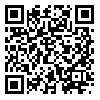BibTeX | RIS | EndNote | Medlars | ProCite | Reference Manager | RefWorks
Send citation to:
URL: http://jmums.mazums.ac.ir/article-1-8165-en.html

 , Aliasghar Zakavi
, Aliasghar Zakavi 
 , Fereshteh Hosseinivaliki
, Fereshteh Hosseinivaliki 
 , Mohammad Yousef pour
, Mohammad Yousef pour 
 , Mehdi Fakhar
, Mehdi Fakhar 
 , Alireza Rafiei
, Alireza Rafiei 
 , Reza Alizadeh-Navaei
, Reza Alizadeh-Navaei 
 , Atena Ramezani
, Atena Ramezani 

Background and purpose: Medicinal plants have received much attention in treatment and control of many diseases due to rich nutritional values and antioxidant properties. Garlic is one of these plants that is mentioned in Islamic sources because of its beneficial effects on human health. In traditional medicine it was used to treat different diseases. This review study aimed at presenting the nutritional properties of garlic according to Islamic sources and its therapeutic applications in traditional medicine.
Materials and methods: A narrative review study was carried out, searching online databases including Google Scholar, Scopus, Pub med, Science direct, ISC, Magiran, and SID. Articles published in 1994-2015 were selected. Also, Holy Quran, Islamic narrations and hadith, traditional medicine and medicinal plants books were studied. The search keywords were Allium stivum, medicinal plant, and Holy Quran. Data was then categorized and analyzed.
Results : Garlic contains some antioxidant compounds and micronutrients such as selenium and alicin, diallyl disulfide and diallyl trisulfide that are effective in improving joint diseases. Also, ajoene, diallyl disulfide and diallyl trisulfide which are found in garlic have proapoptotic activities and reduce cancer cell growth.
Conclusion: Garlic contains antioxidant compounds such as selenium, allicin and diallyl trisulfid that have antimicrobial and antitumor activities. Identifying its effective compounds and mechanisms could help in deciphering the inspiration of holy Quran about some specific plants.
| Rights and permissions | |
 |
This work is licensed under a Creative Commons Attribution-NonCommercial 4.0 International License. |




